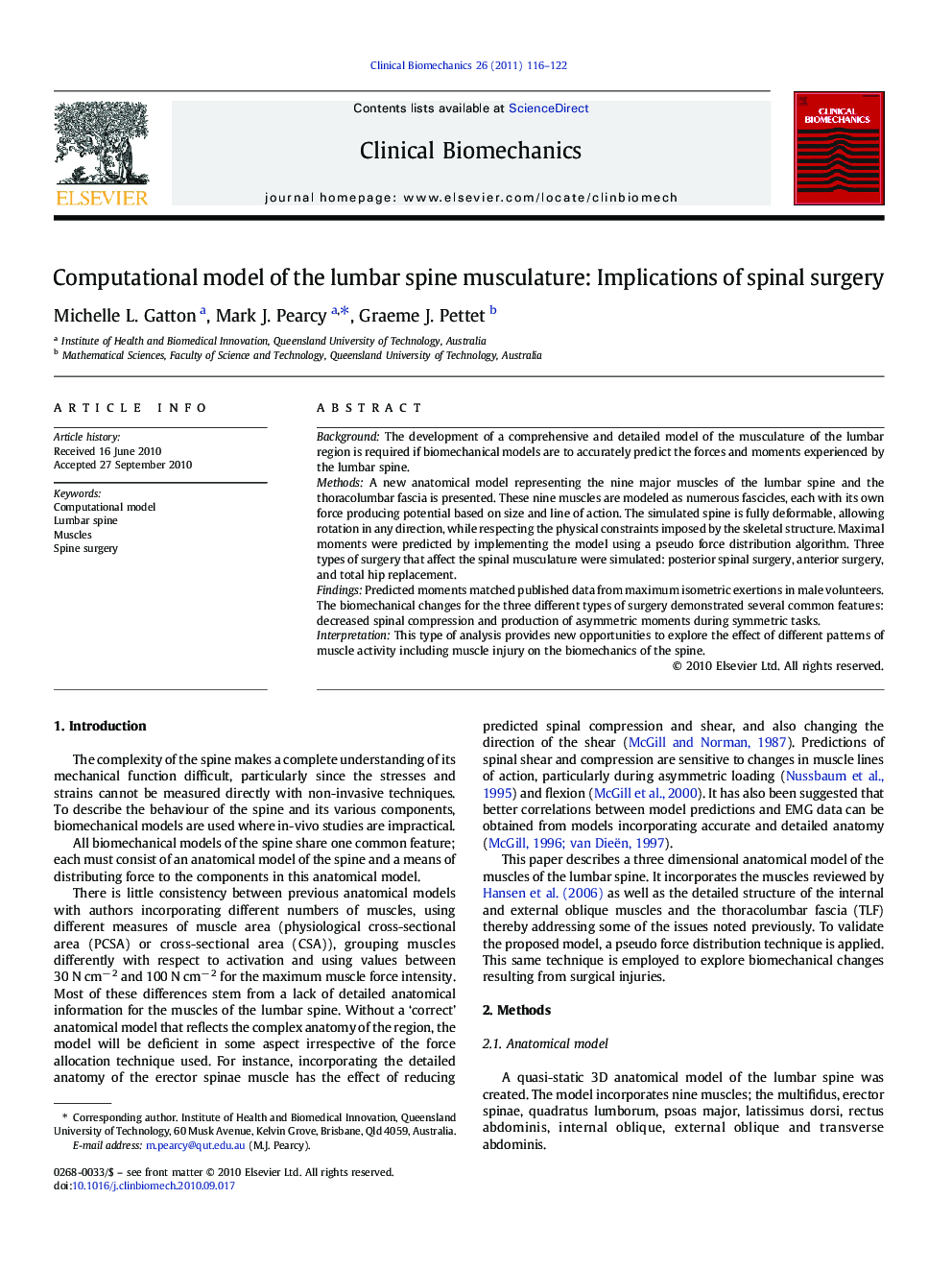| Article ID | Journal | Published Year | Pages | File Type |
|---|---|---|---|---|
| 4050859 | Clinical Biomechanics | 2011 | 7 Pages |
BackgroundThe development of a comprehensive and detailed model of the musculature of the lumbar region is required if biomechanical models are to accurately predict the forces and moments experienced by the lumbar spine.MethodsA new anatomical model representing the nine major muscles of the lumbar spine and the thoracolumbar fascia is presented. These nine muscles are modeled as numerous fascicles, each with its own force producing potential based on size and line of action. The simulated spine is fully deformable, allowing rotation in any direction, while respecting the physical constraints imposed by the skeletal structure. Maximal moments were predicted by implementing the model using a pseudo force distribution algorithm. Three types of surgery that affect the spinal musculature were simulated: posterior spinal surgery, anterior surgery, and total hip replacement.FindingsPredicted moments matched published data from maximum isometric exertions in male volunteers. The biomechanical changes for the three different types of surgery demonstrated several common features: decreased spinal compression and production of asymmetric moments during symmetric tasks.InterpretationThis type of analysis provides new opportunities to explore the effect of different patterns of muscle activity including muscle injury on the biomechanics of the spine.
